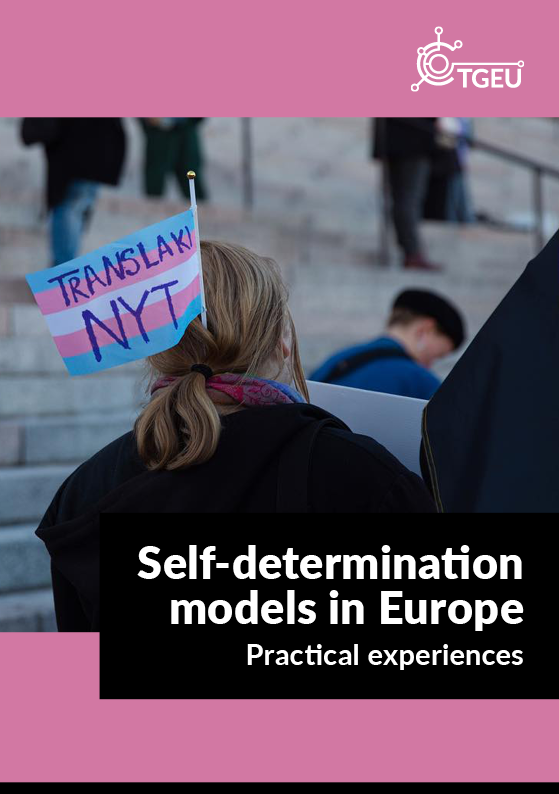Gender Self-determination Actually Works! Study Finds

TGEU launches study on the experiences with self-determination laws in nine European states.
Key message
Legal gender recognition based on self-determination works! Women’s rights, gender equality, safety, and security do not suffer. On the contrary, positive effects prevail.
Why this report on self-determination?
Many countries are currently reforming gender recognition laws. Self-determination is growing in popularity as a model. Gender self-determination means that a person can change gender marker and name on official documents through an easy administrative process. The change is based on the person’s self-determined gender identity. No third party is required.
Debates over self-determination laws often hinge on projected fears. These fears particularly focus on the effects of the law. They can become stumbling blocks that stop or water down reforms, if not addressed properly.
Several states in Europe already have gender self-determination models. We can learn from their experiences. Fact-based arguments help dismiss misinformation, encourage human rights compliance, and keep legal gender recognition reforms on track.
What ‘s in this report on self-determination laws in Europe?
We look at how self-determination works in practice. The report includes experiences from 9 states in Europe. We reached out to public authorities in:
- Belgium
- Denmark
- Iceland
- Ireland
- Malta
- Luxembourg
- Norway
- Portugal
- Switzerland.
We asked for official data and reports on the implementation of self-determination models.
The report contains an overview over the different models. It shows experiences on questions such as:
- Have there been cases of “regret”? have people made repeat applications?
- Have people used the law for fraud or with a criminal intent?
- Are there negative effects from the law? Are single sex services for women affected?
- Are there positive effects from the self-determination law?
The publication also discusses how children, non-binary people, and migrants can access self-determination procedures.
How does self-determination work in practice?
Our research finds that none of previously expressed fears materialised.
- Applications are not made for fraudulent reasons or to conceal abuse.
- Applications are made after careful consideration.
- In very few cases people filed a second application to return to a name or gender marker held before. Transphobic family and social environment are key factors.
- Gender self-determination does not undermine gender equality quota measures for women’s equality.
- The provision of single sex services, such as shelters, women support centres, changing facilities, hospitals, prison facilities, as well as equality data collection, are not affected.
- Positive effects of the law clearly prevail.
Why self-determination and not self-identification?
Self-determination refers to a much wider concept than self-identification. Self-identification refers to declaring one’s gender identity at a registry office. It is one part of a procedure based on self-determination. However, determining one’s gender identity is a much longer and complex process.
Self-determination is also traced back to and embraced by feminist and indigenous struggles. It is also recognised by key human rights courts.
We hope this report supports processes and debates for more and better gender recognition laws based on self-determination.